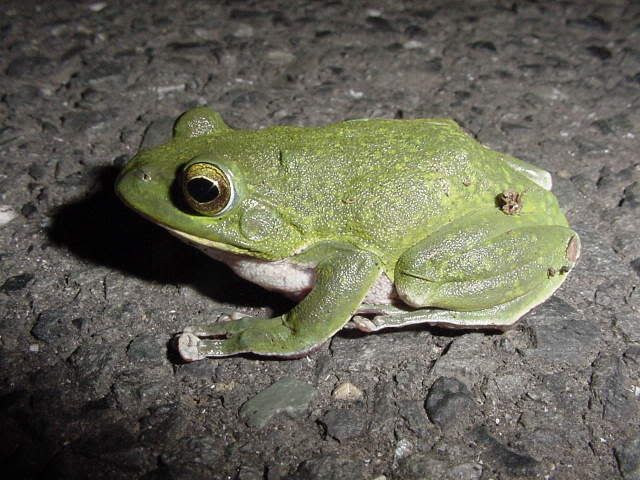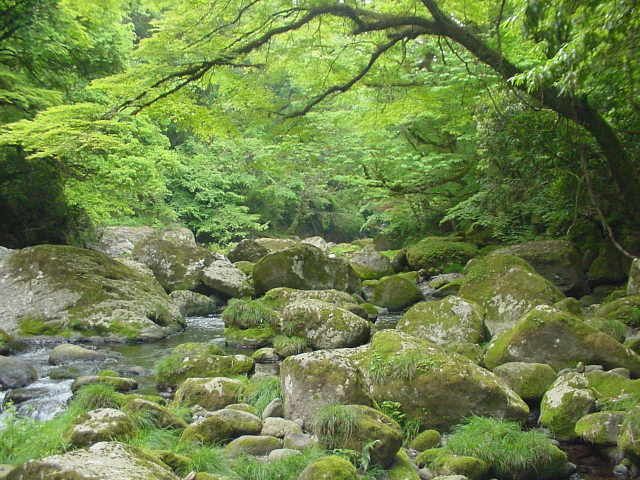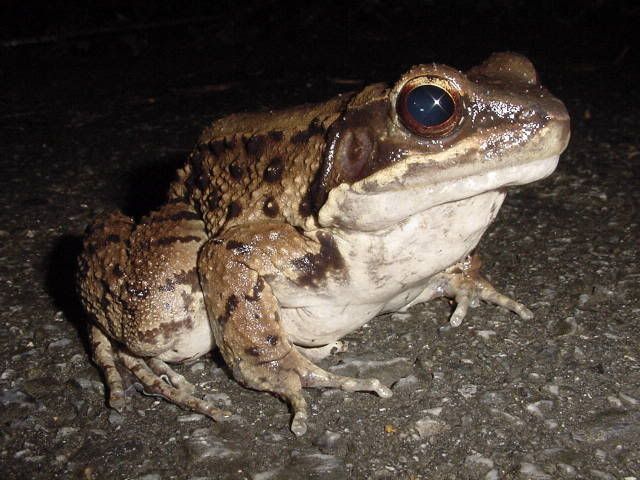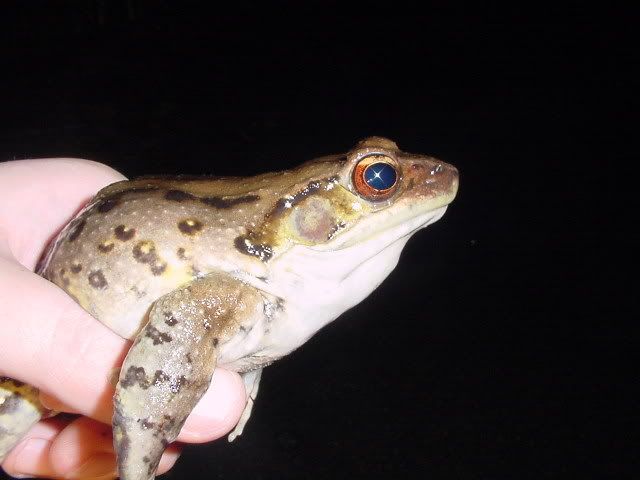Posted by:
TxHerper
at Thu Sep 8 21:42:20 2005 [ Email Message ] [ Show All Posts by TxHerper ]
These frogs were abundant, and the choruses were music to my ears:

Japanese Tree Frog (Hyla japonicus).
Amplectant pair:

From a distance, the choruses sounded similar to Acris crepitans, but nearby they sounded more like a mix of Hyla cinerea and Acris crepitans.
I only saw one of these guys:

Rhacophorus schlegellii
It plopped from a tree right onto the road. That was at least an 8í drop; mustíve been uncomfortable for the frog, as it didnít move for the photo session.
These frogs were also a common sight:

Indian Rice Frog (Rana l. limnocharis)
They are native to Japan, and have a very broad range.
I only saw a couple of these toads:

Japanese Toad (Bufo j. japonicus). Apparently, this species has suffered some considerable, local population declines due to scientific collection (=the frog most students see). They have an interesting defense strategy. Instead of inflating their bodies, they raise up, with legs nearly vertical, and flatten their vertical profile. It was fun to watch, but very frustrating to photograph. This was the best I could do, as their other defensive strategy is movement:

These frogs were a frequent sight while walking through forested areas:

Mountain Brown Frog (Rana ornativentris)
Hereís a habitat pic where they were particularly common:

Very green.
This good sized ranid is restricted to Okinawa:

Holstís Frog (Rana holsti)
Hereís another for size comparison:

Holstís Frogs have spurs on their front feet that can produce annoying cuts.
I also saw Rana narina, Buergeria japonica, and Polypedates leocomystax, but I ran out of disk space.
These newts were out in force, and are commonly encountered on Okinawa:

Ryukyu Firebelly Newt (Cynops ensicauda popei)
I was really hoping to find some Hynobiids on the mainland, and Tylototriton on Okinawa, but that didnít happen.
Not much in the turtle department either, but I was able to capture this pic:

Chinese Softshell Turtle (Pelodiscus sinensis)
A habitat pic:

Not where I would expect to see softshells here in the states.
And a couple of lizards:

Japanese Gecko (Gekko japonicus)

Japanese Grass Lizard (Takydromus tachydromoides).
Shane
[ Show Entire Thread ]
|





